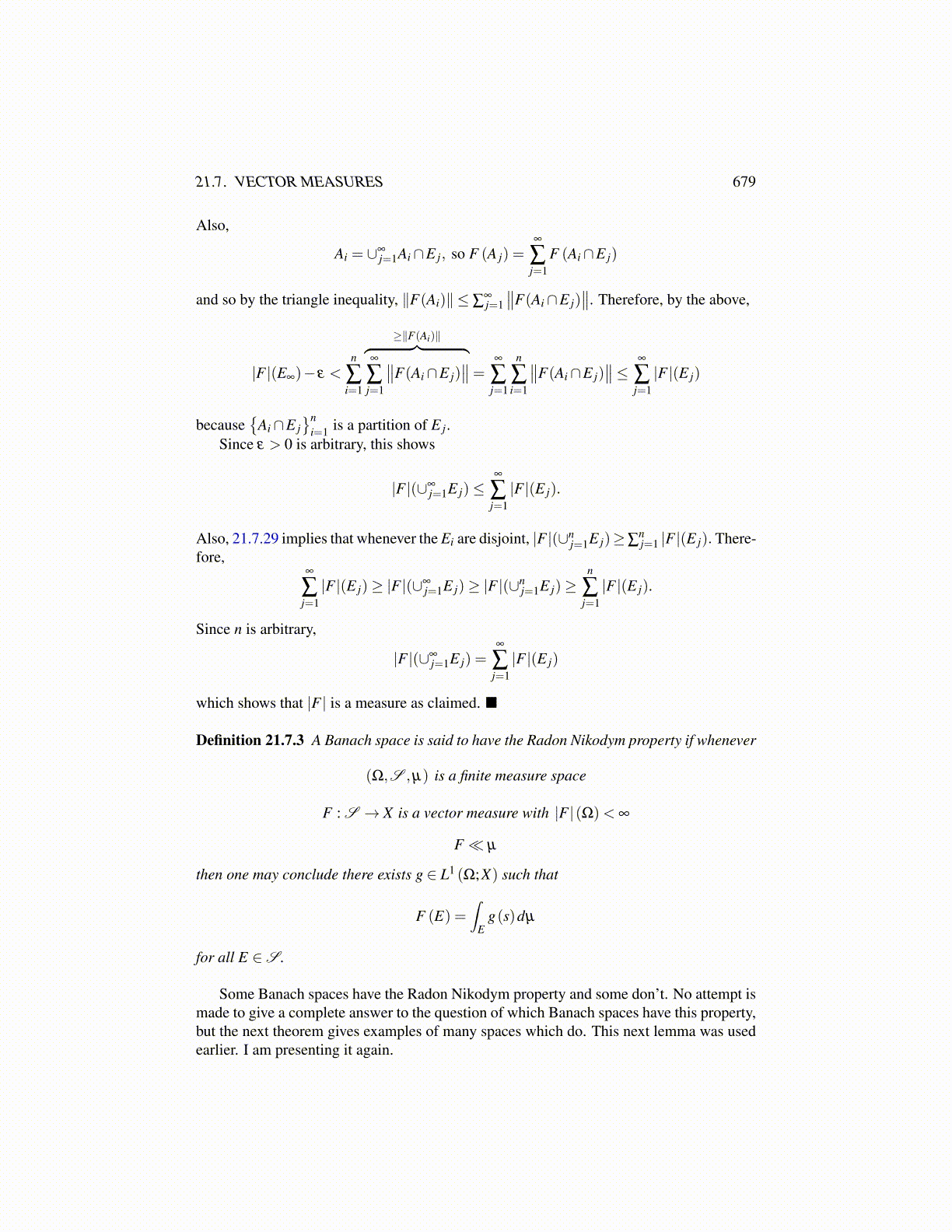
21.7. VECTOR MEASURES 679
Also,
Ai = ∪∞j=1Ai∩E j, so F (A j) =
∞
∑j=1
F (Ai∩E j)
and so by the triangle inequality, ∥F(Ai)∥ ≤ ∑∞j=1∥∥F(Ai∩E j)
∥∥. Therefore, by the above,
|F |(E∞)− ε <n
∑i=1
≥∥F(Ai)∥︷ ︸︸ ︷∞
∑j=1
∥∥F(Ai∩E j)∥∥= ∞
∑j=1
n
∑i=1
∥∥F(Ai∩E j)∥∥≤ ∞
∑j=1|F |(E j)
because{
Ai∩E j}n
i=1 is a partition of E j.Since ε > 0 is arbitrary, this shows
|F |(∪∞j=1E j)≤
∞
∑j=1|F |(E j).
Also, 21.7.29 implies that whenever the Ei are disjoint, |F |(∪nj=1E j)≥∑
nj=1 |F |(E j). There-
fore,∞
∑j=1|F |(E j)≥ |F |(∪∞
j=1E j)≥ |F |(∪nj=1E j)≥
n
∑j=1|F |(E j).
Since n is arbitrary,
|F |(∪∞j=1E j) =
∞
∑j=1|F |(E j)
which shows that |F | is a measure as claimed.
Definition 21.7.3 A Banach space is said to have the Radon Nikodym property if whenever
(Ω,S ,µ) is a finite measure space
F : S → X is a vector measure with |F |(Ω)< ∞
F ≪ µ
then one may conclude there exists g ∈ L1 (Ω;X) such that
F (E) =∫
Eg(s)dµ
for all E ∈S .
Some Banach spaces have the Radon Nikodym property and some don’t. No attempt ismade to give a complete answer to the question of which Banach spaces have this property,but the next theorem gives examples of many spaces which do. This next lemma was usedearlier. I am presenting it again.